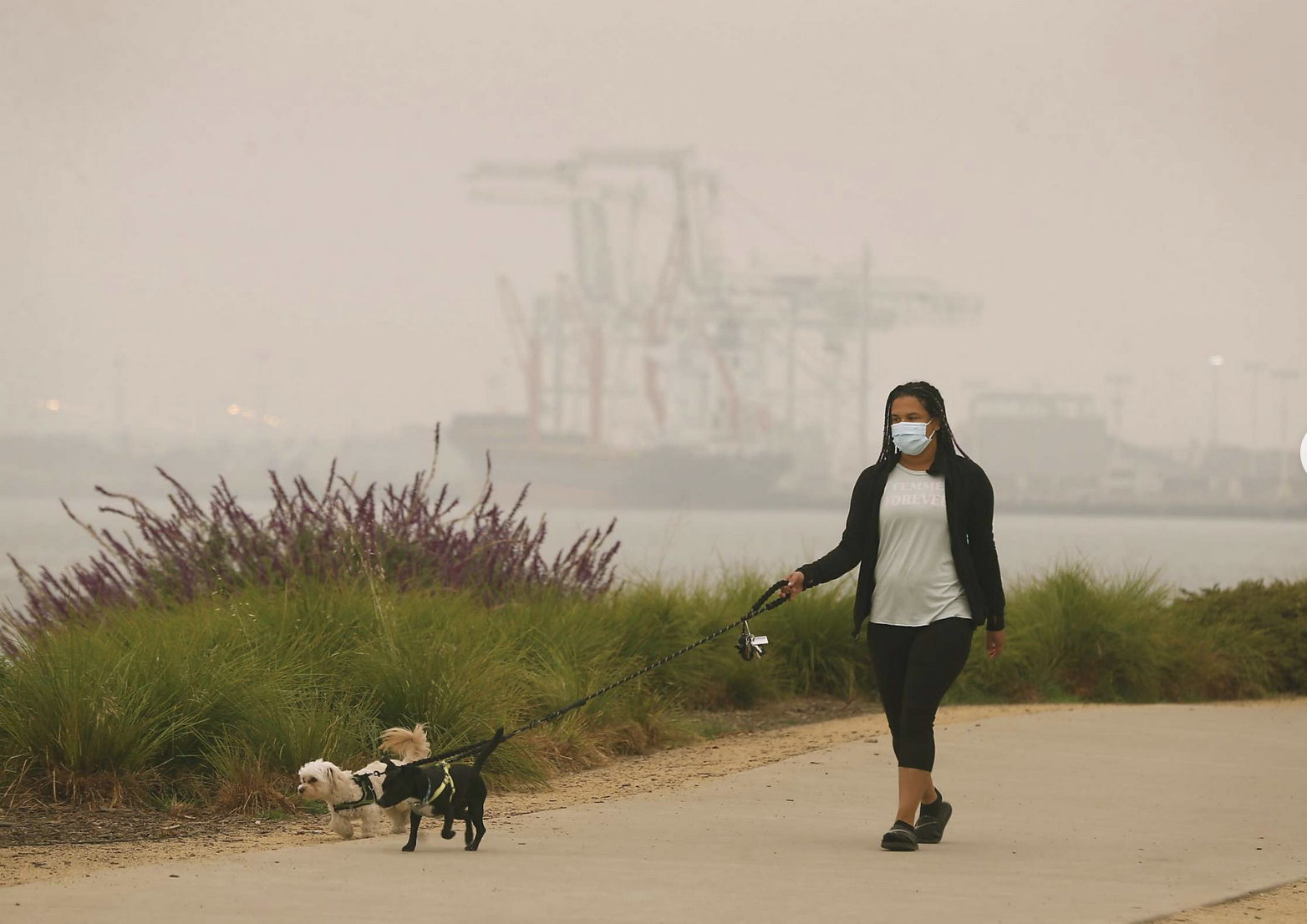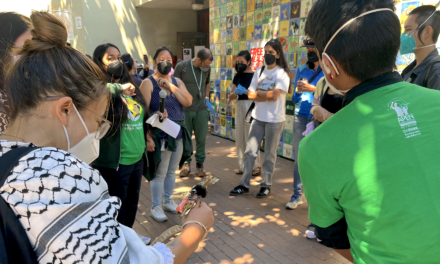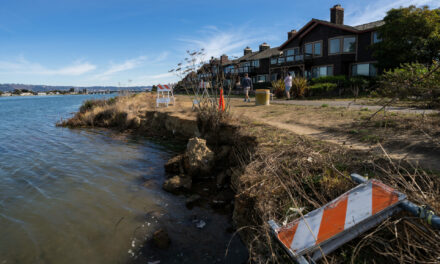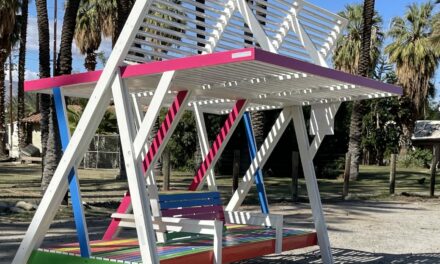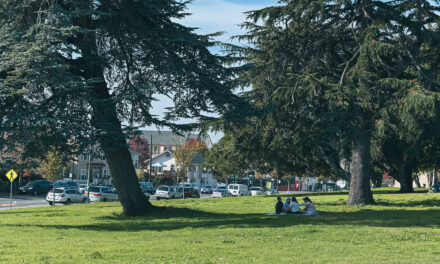Purple Air Warnings Not Enough
If late fall fires start up again after the October deluge, Alameda County will already have smoke alert protocols in place. The county developed specific thresholds and delivery systems for alerts over the past two years. “Our geography creates a particular need for us to address smoke,” says county sustainability project manager Sarah Church. Church earned the title “smoke quarterback” from her work convening a variety of partners in county health, emergency, and environmental services to discuss how to address the smoke, which blanketed much of the East Bay for long unhealthy periods of “red air” in recent summers. With prevailing winds off the Pacific blowing up against the East Bay hills, smoke often gets trapped in low inland areas of the county.
In crafting their new alerts, the county also worked to remove jargon and use plain language. The “Purple Air” real-time air quality app is not a click away on a smart phone for all, for example. “We found when we tested messages using EPA terms like ‘orange air’ and ‘red air’ for levels of air pollution, people didn’t know what we were talking about,” says Church.
Results of focus groups also suggested that some members of public were less likely to pay attention to county smoke alerts on their phones or Facebook than to information from a trusted local institution. As a result, the county created a new subscription within their alert system available to community institutions such as churches, youth organizations, senior centers, and worker centers.
The county also defined air quality thresholds and duration periods for alerts, and protocols for county health and other officials to implement. Experience with these air quality communications also informed the county’s COVID-19 response.
Such protocols are part of a body of fast-developing models for better regional communication about when to close schools or how to manage clean air shelters, among other wildfire season challenges discussed at a recent meeting of the Bay Area Climate Action Network, where Church shared what she learned with other cities and counties.
“Climate change threats are now, and we all have to come up to speed very quickly, ” she said. “No one can do it alone.”
Other Recent Posts
Boxes of Mud Could Tell a Hopeful Sediment Story
Scientists are testing whether dredged sediment placed in nearby shallows can help our wetlands keep pace with rising seas. Tiny tracers may reveal the answer.
“I Invite Everyone To Be a Scientist”
Plant tissue culture can help endangered species adapt to climate change. Amateur plant biologist Jasmine Neal’s community lab could make this tech more accessible.
How To Explain Extreme Weather Without the Fear Factor
Fear-based messaging about extreme weather can backfire. Here are some simple metaphors to explain climate change.
Live Near a Tiny Library? Join Our Citizen Marketing Campaign
KneeDeep asks readers to place paper zines in tiny street libraries to help us reach new folks.
Join KneeDeep Times for Lightning Talks with 8 Local Reporters at SF Climate Week
Lightning Talks with 8 Reporters for SF Climate Week
ReaderBoard
Once a month we share reader announcements: jobs, events, reports, and more.
Staying Wise About Fire – 5 Years Post-CZU
As insurance companies pull out and wildfire seasons intensify, Santa Cruz County residents navigate the complexities of staying fire-ready.
Artist Christa Grenawalt Paints with Rain
Snippet of insight from the artist about her work.
High-Concept Plans for a High-Risk Shoreline
OneShoreline’s effort to shield the Millbrae-Burlingame shoreline from flooding has to balance cost, habitat, and airport safety.
In a Climate Disaster, Your Car Won’t Save You
Fleeing wildfires without a car might seem scary, but so is being trapped in evacuation gridlock — and the hellscape of car-dependency.






